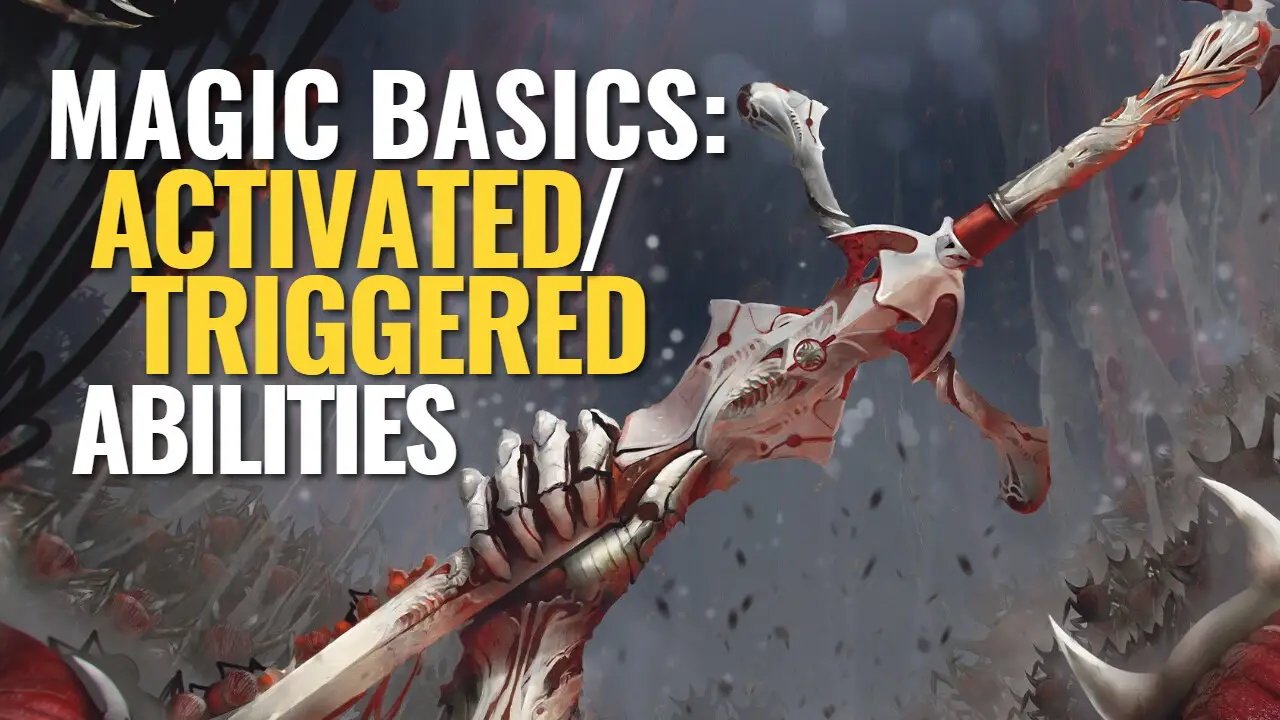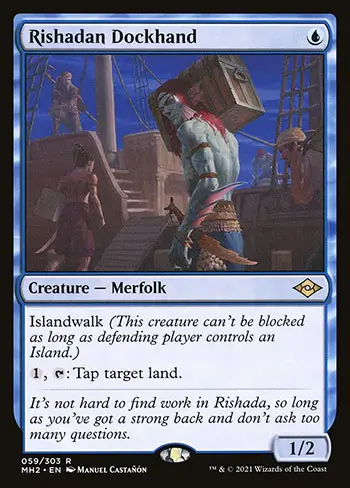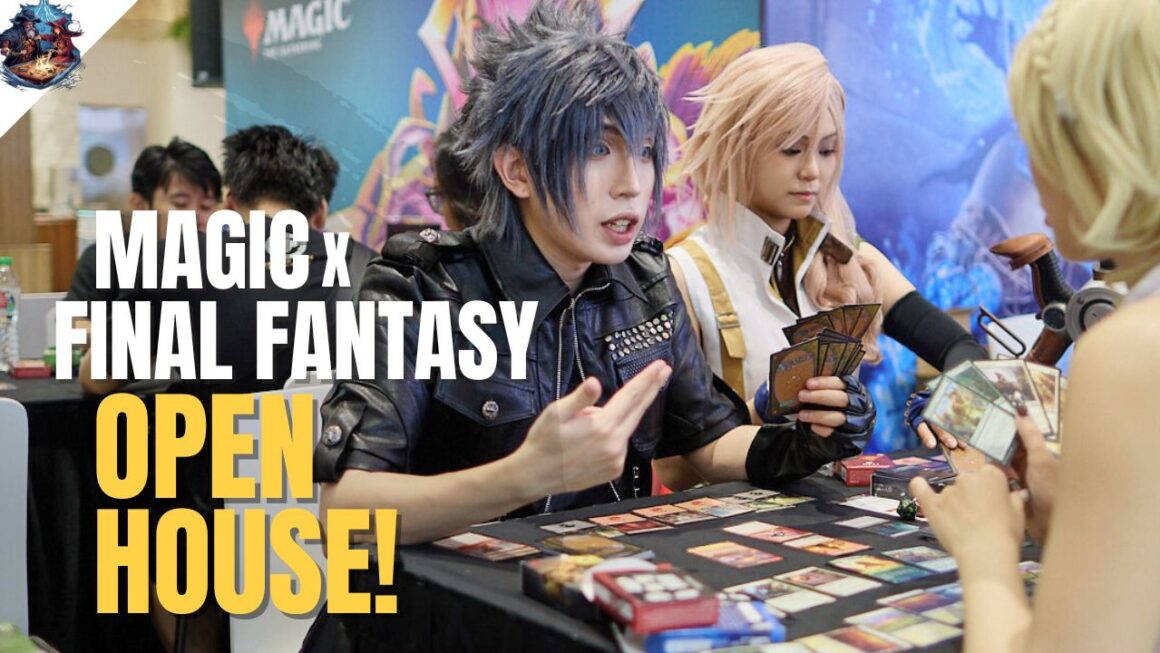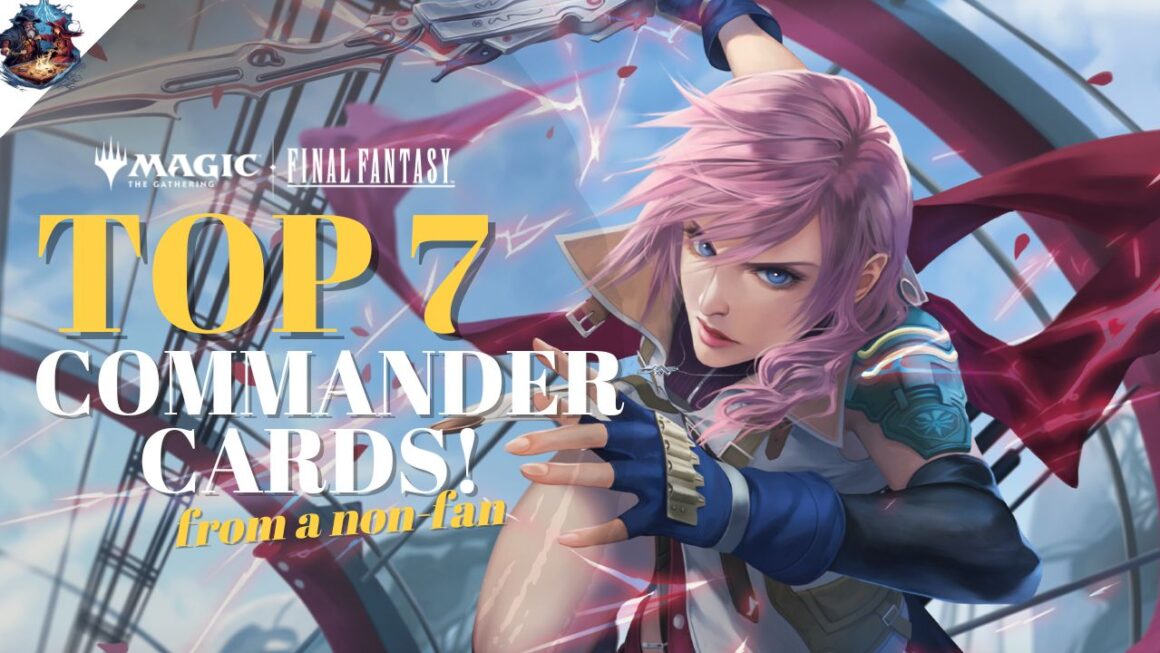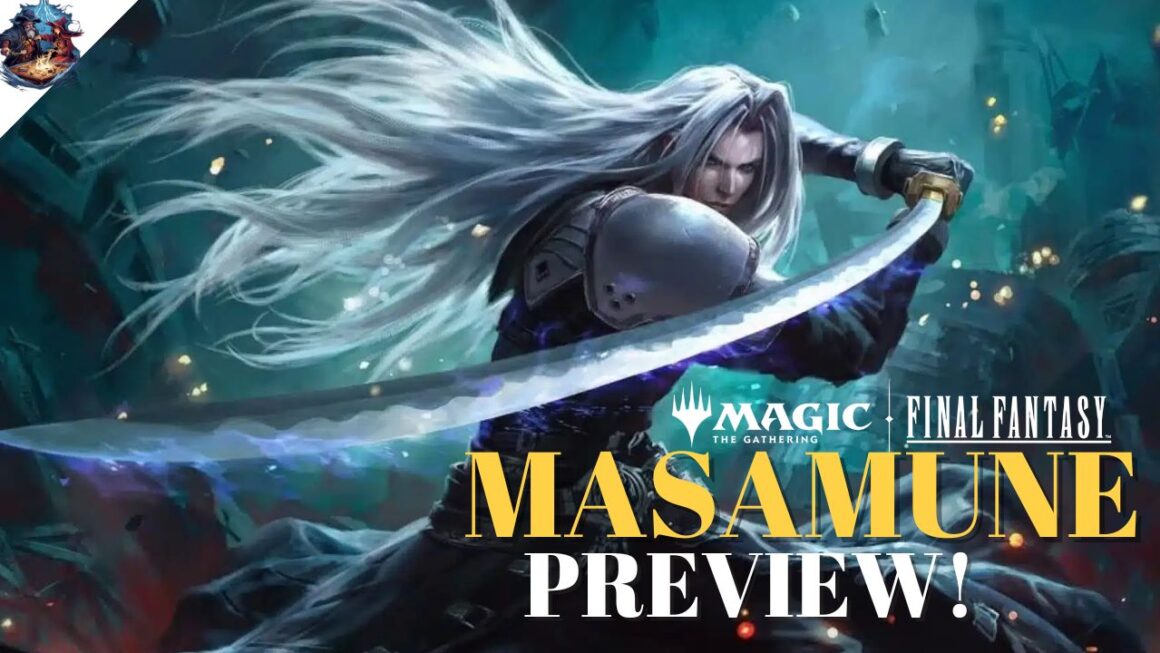A key component of playing Magic: the Gathering is card abilities. These abilities are often repeatable, unlike the resolution of a spell, hence any Magic match will almost certainly see the use of abilities.
Abilities come in all shapes and forms. They can happen at different phases of the game, whether on your turn or the opponent’s, and sometimes can be controlled but at other times not. In general, abilities can be classified into 4 main categories – activated, triggered, Mana, and static.
Below you’ll get a good overview of how abilities work so that you’ll be able to unleash the full potential of your Magic cards.
What is the Official Ruling of an “Ability” in Magic: the Gathering?
According to the comprehensive rules, rule 112.1, an ability can be one of the following:
- An ability is a characteristic an object has that lets it affect the game.
OR
- An ability can be an activated or triggered ability on the Stack, which allows it to become an object*.
* An object is an ability on the stack, a card, a copy of a card, a token, a spell, a permanent, or an emblem (Rule 109.1)
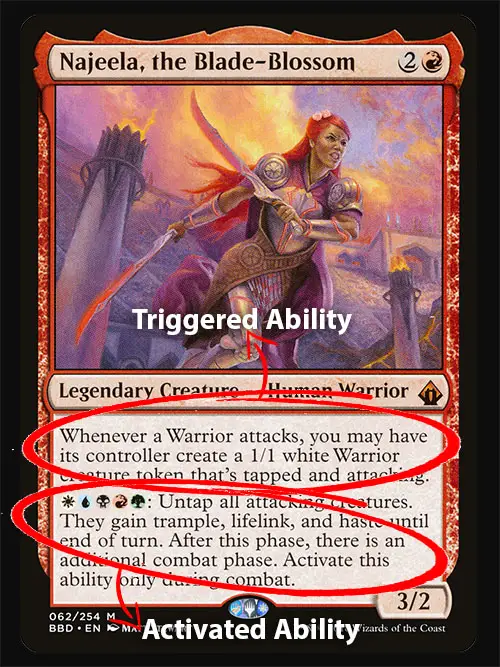
To put it simply for beginners:
An ability in Magic: the Gathering is an effect that a card creates, often through a cost. Most abilities will come from Permanent cards (Lands, Creatures, Artifacts, Enchantments, Planeswalkers) but there are a few exceptions.
Now let’s compare the main differences between an Activated, Triggered and Mana Ability, and what they’ll look like in a typical game of Magic:
Activated Abilities: Cost and Effect
Activated Abilities are abilities with a cost and an effect.
They are written as “[Cost]: [Effect.] [Activation instructions (if any).]”
Costs are always written before the colon (:) of the line of text, and the effect is everything after the colon.
For example, the second ability of Najeela, the Blade-Blossom reads:
“{W}{U}{B}{R}{G}: Untap all attacking creatures. They gain trample, lifelink, and haste until end of turn. After this phase, there is an additional combat phase. Activate only during combat.”
The cost of activating Najeela’s ability is paying 5 mana, one of each colour.
The effect of Najeela’s ability is to untap all attacking creatures, give those attacking creatures Trample, Lifelink, and Haste until the end of the turn, and create an additional combat phase after the current one.
This activated ability has special activation instructions (not all abilities do), which is it only be activated during Combat.
As a fun little exercise, look at the following cards and determine what the costs, effects and activation instructions (if any) of their activated abilities are!
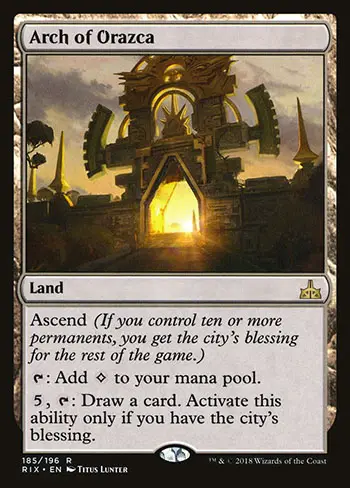
Ability 1:
Cost: Tapping the Card
Effect: Add 1 Generic Mana
Ability 2:
Cost: Pay 5 Generic Mana, Tap the Card
Effect: Draw a Card
Activation Instructions: This ability can only be activated if you have the City’s Blessing
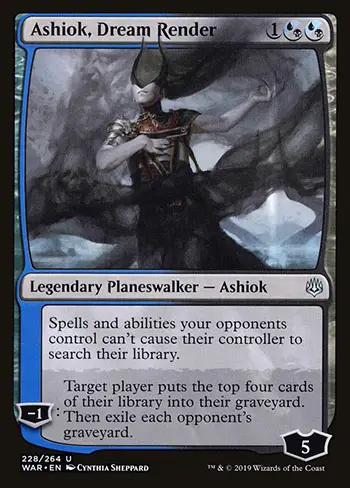
Ability:
Cost: +1 Loyalty counter
Effect: Target player Mills 4 cards, then Exile each opponent’s Graveyard
Triggered Abilities: If Something Happens, This Happens
Triggered abilities have a trigger condition and an effect. They are written as “[When/Whenever/At] [trigger condition or event], [effect]. [Instructions (if any).]”
Let’s go back to Najeela, the Blade Blossom – her 1st ability is considered a Triggered Ability because it starts with “Whenever”.

Najeela’s Triggered Ability will automatically be put onto the Stack (a resolution system where spells and abilities resolve one at a time) when the trigger condition or event is met. There are no methods that exist which would allow a player to prevent a triggered ability from going onto the stack once the condition/event has been met.
Because they aren’t cast or activated, triggered abilities can trigger even when it isn’t legal to cast spells and activate abilities. Effects that would stop abilities from being activated do not affect triggered abilities.
Delayed Triggers: A Subset of Triggered Abilities with a Time Delay
Certain other abilities create what is known as a “Delayed Trigger” event. These triggers do not resolve when the ability that creates them does, but rather trigger only when another event occurs after the original ability. If the event that would trigger the delayed trigger occurs before or during the creation of the delayed trigger, the trigger does not resolve, and instead checks for the next time such an event would occur.
For example, if a delayed trigger ability of “When this creature leaves the battlefield” would resolve but the creature has already left the battlefield by other means, the trigger does not resolve.
Activated and Triggered Abilities Use the Stack
Both Activated and Triggered abilities typically utilise the Stack when they resolve, which means players can respond to each other’s abilities just as they could with casting spells or in combat. So there is a chance to nullify an ability effect.
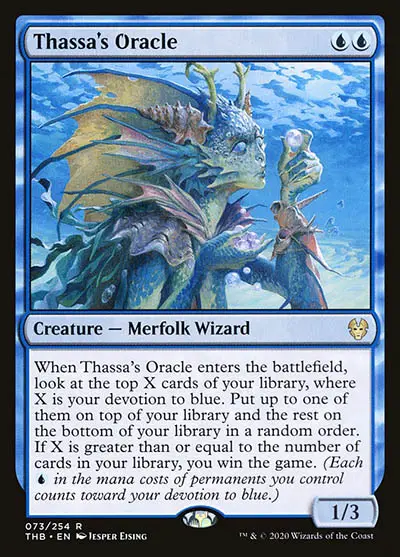
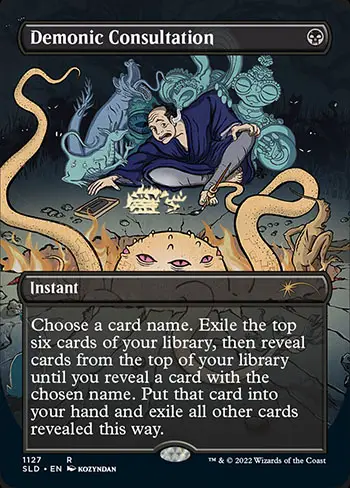
For example, lets say an opponent casts Thassa’s Oracle, and with it’s (entering the Battlefield) Triggered Ability on the Stack, casts Demonic Consultation and names a card that doesn’t exist in their deck. This would empty out their Library, and effectively win them the game.
In order to stop them from winning, you can use the 4th Activated Ability on Kenrith, the Returned King to force them to draw a card, after letting Demonic Consultation resolve, but before Thassa’s Oracle‘s trigger resolves. Since my opponent would draw a card from an empty Library, the opponent loses the game instead. (When you’re unable to draw from an empty Library, you lose the game)
Mana Abilities: A Subset with Special Exceptions
A certain subset of Activated and Triggered Abilities can be considered Mana Abilities. Lands have Mana Abilities, since they tap for Mana, and Creatures like Llanowar Elves have a clear Mana Ability too.
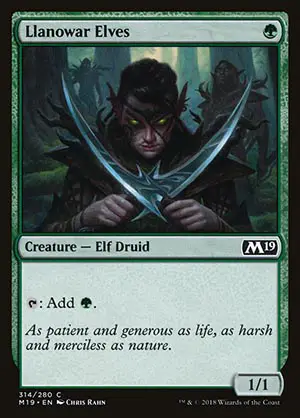
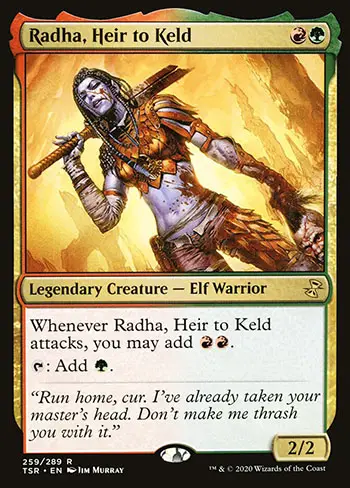
Things get a little tricky after that, as Activated Abilities and Triggered Abilities can also be Mana Abilities. But they have to fulfill certain conditions:
For an Activated Ability to be considered a Mana Ability, it has the following characteristics:
- It does not require a target
- It adds Mana to a player’s mana pool
- It is not a Loyalty ability of a Planeswalker
Similarly, for a Triggered Ability to be considered a Mana Ability, it has the following characteristics:
- It does not require a target
- It triggers from the activation or resolution of i) an Activated Mana Ability, or ii) from Mana being added to a Mana Pool
- It could add Mana to a player’s mana pool
For Radha, Heir to Keld (above), she has a Triggered Ability that also counts as a Mana Ability. Mana abilities are special in that they do not use the Stack (a big topic to be covered in future), this means that mana abilities cannot be responded to, and resolve immediately upon activation. In Radha’s case, once she attacks, the Mana is immediately added to your pool should you choose to do so.
Static Abilities: Always Turned On
Static abilities represent continuous effects that do not use the stack. These effects are active as long as the permanent with the ability remains on the battlefield and has the ability, or as long as the object with the ability remains in the appropriate zone.

For instance, Thalia, Guardian of Thraben has a static ability that reads “Non-Creature spells cost 1 more to cast”. This means all non-Creature spells require 1 more generic mana to be cast, and this tax effect will only be removed by removing the Thalia from the battlefield.
End Step
Overall, abilities sound difficult on paper, but are often the backbone of most games of Magic. A mastery of the different types of abilities will give you plenty of wiggle room to react to your opponent’s plays, and can often mean the difference between a win and a defeat.

